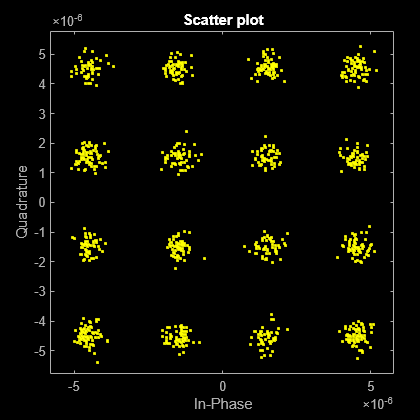comm.ThermalNoise
Add thermal noise to signal
Description
The comm.ThermalNoise
System object™ object simulates the effects of thermal noise on a complex baseband signal. For
more information, see Algorithms.
To add thermal noise to a complex baseband signal:
Create the
comm.ThermalNoiseobject and set its properties.Call the object with arguments, as if it were a function.
To learn more about how System objects work, see What Are System Objects?
Creation
Description
noise = comm.ThermalNoise
noise = comm.ThermalNoise(Name=Value)SampleRate=2 sets the input signal sample rate to 2.
Properties
Usage
Description
Input Arguments
Output Arguments
Object Functions
To use an object function, specify the
System object as the first input argument. For
example, to release system resources of a System object named obj, use
this syntax:
release(obj)
Examples
Algorithms
Wireless receiver performance is often expressed as a noise factor or figure. The noise factor, F, is defined as the ratio of the input signal-to-noise ratio, Si/Ni to the output signal-to-noise ratio, So/No, such that
Given the receiver gain G and receiver noise power Nckt, the noise factor can be expressed as
The IEEE® defines the noise factor assuming that noise temperature at the input is T0, where T0 = 290 K. The noise factor is then
k is Boltzmann's constant. B is the signal bandwidth. Tckt is the equivalent input noise temperature of the receiver and is expressed as
The overall noise temperature of an antenna and receiver Tsys is
where Tant is the antenna noise temperature.
The noise figure NF is the dB equivalent of the noise factor and can be expressed as
The noise power can be expressed as
where V is the noise voltage expressed as
and R is the reference load.


